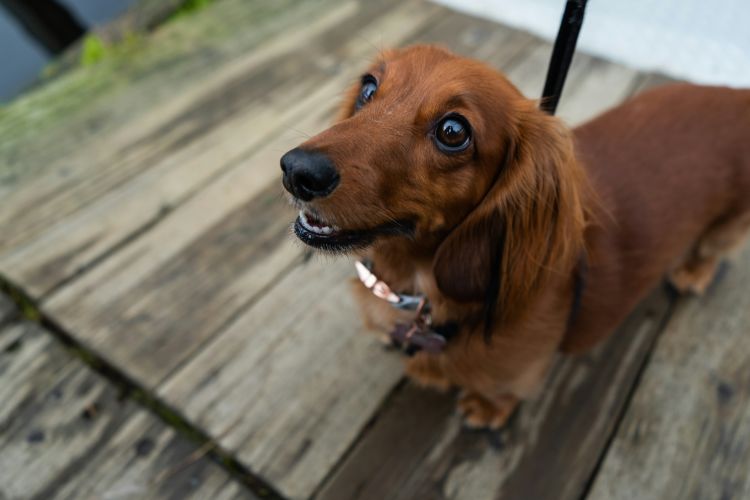By Hannah Deadman-Arnst

While there are many unique dog breeds out there, the dachshund is perhaps one of the most iconic! This brave little hunting dog is among one of the most recognizable—from its long, low figure to its surprisingly deep bark. Keep reading to discover more about the dachshund!
Originally bred in the 16th and 17th centuries, the dachshund is of German origin. Its name translated means “badger dog.” They’re also nicknamed wiener dogs, hotdogs, sausage dogs, and Doxies.
Oh and PS, it’s pronounced “dox-hoond” or (“dox-und” if you want to Americanize it)—not “dash hound.”
Dachshunds were bred to help hunters pursue badgers, which weigh up to 20 pounds or so. What’s more, dachshunds weren’t just bred to hunt—but to kill. According to the AKC, they can live between 12-16 years and are the only breed that can hunt above and below ground.
Dachshunds have three coat types: smooth-haired, wire-haired, and long-haired. They also can be standard or miniature. The standards range from about 15 to 30 pounds, and the minis typically weigh 11 pounds or under.

Long & Lovable
Despite their small size, their personality is big, bold, and lovable. With a big bark and an independent demeanor, Doxies make great companions and family dogs! Still, prospective owners should understand that working dogs come with their own unique characteristics.
Since dachshunds were originally bred to hunt, instinctual behaviors include digging, barking (like other hounds—to identify the prey’s location), and a high prey drive. Prospective owners with beloved yards and small pets such as cats or guinea pigs—or those considering welcoming a small animal into their home—should consider these elements before adopting a dachshund. And remember, each dog is different. It often comes down to each individual’s temperament or how they’re raised.
With an independent spirit, Doxies can be a bit more challenging to train than other breeds like Labradors or golden retrievers. Patience, love, positive reinforcement, and consistency are key.
Finally, despite their size, dachshunds do need plenty of exercise! By giving your dog enough exercise and stimulation each day, you can help mitigate their boredom and potentially destructive behavior, such as too much digging. If you enjoy a bit of a training challenge, a dachshund may be right for you.

Health Considerations
Because of their iconic shape, dachshunds can be prone to serious back issues such as intervertebral disc disease (IVDD). To avoid this, dog moms and dads should be diligent about keeping their dachshunds at a healthy weight. Other preventative measures include helping them get plenty of exercise to build healthy muscle, ensuring they don’t jump off furniture or run down the stairs too much, and not overfeeding. These activities can place unnecessary pressure on their backs.
While dachshunds were bred to have long, adorably floppy ears that protected them from dirt and debris in the badger holes they used to hunt, it also means they can be prone to ear infections. Owners should be diligent about keeping them clean using a dog-friendly solution or wipe.
As is the case with many other breeds, dachshunds need consistent brushing to keep their coats healthy and shiny—especially the long- or wiry-haired types.
Sadly, like many dogs, there are so many dachshunds in need of homes right now. Lowrider Rescue in Florida is a great place to start. Check out their adoptables today and help a lovable Doxie find his or her furever home!

